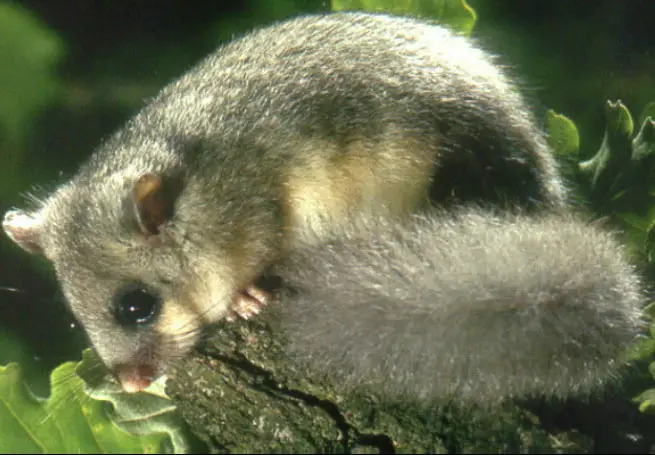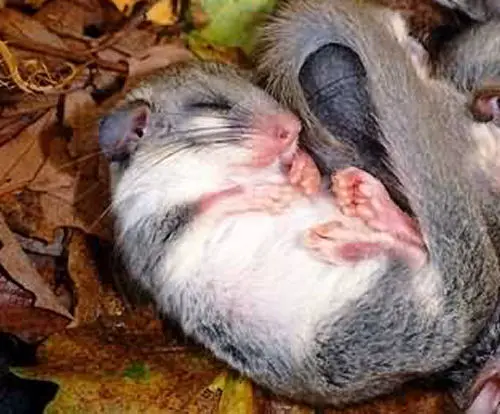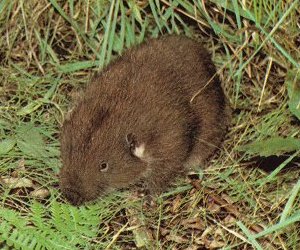Edible Dormouse
It’s not often that an animal is named “edible”, and although it may seem rather barbaric, the truth is that in Ancient Rome these Dormice were deliberately bred in special farms, and when a celebration was coming near, they were fed with acorns and chestnuts and then served as a delicacy. Nowadays, this animal, also known as the “Fat Dormouse” inhabits central, eastern and southern Europe, as well as the Middle East.
This animal is considerably larger than its closest relative – the Common Dormouse. Being about 13-20 cm long, with a 11-16 cm long tail, the Edible Dormouse is often confused with the gray squirrel. The fur indeed is silver or grayish brown, with a whiter underside, but the animal still has the large, round ears and the short pink nose, typical to all Dormouse species. The tail which is almost as long as the rest of the body is fluffy, with long, soft fur.
Initially, Edible Dormice could only be seen in deciduous forests, but now they also live in gardens or even parks, if there are enough trees with thick leafage. At night, the animal searches for food in bushes and lower trees, maneuvering through the branches with enviable agility. This rodent doesn’t go far from its den and returns to it every morning. The den is usually set up in a tree cavity, under a roof, in an abandoned bird house and is is furnitured with chewed leaves and straws.
This animal’s diet consists almost only of vegetation, and the Dormouse will rarely eat bugs or bird eggs. At the end of each summer, the Edible Dormouse stores fat which will later be used during hibernation. The animal often becomes intruding, and steals apples and other fruits from houses and barns. When the winter comes, the Dormouse may be even two times heavier than at the beginning of the summer. Almost all of this weight is lost during the 7 month long winter hibernation.
Mating occurs in summer and each female has only one litter per year. The mating period starts with a loud rut, when the male chases the female, emitting loud whistles along the way. Pregnancy lasts for about 30 days and 4-6 pups are born in a den made of moss and leaves. It is quite large and most usually hidden inside a tree cavity. The young Dormice are born completely helpless and they open they eyes only after three weeks. The parents nurse them until the end of the summer, and they spend the first winter together, too. After the first winter, they’re completely independent.
Even though it may seem that the times when the Edible Dormouse was really eaten are in the past, they are still being hunted for meat in some regions. Still, hunting for meat is nothing compared to the destruction of the natural habitat, if we’re talking about what decreases the numbers of these small animals. Still, Edible Dormice are quite common in all their inhabited areas and no actions need to be taken to conserve them.





“Barbaric”???
What an odd thing to say.